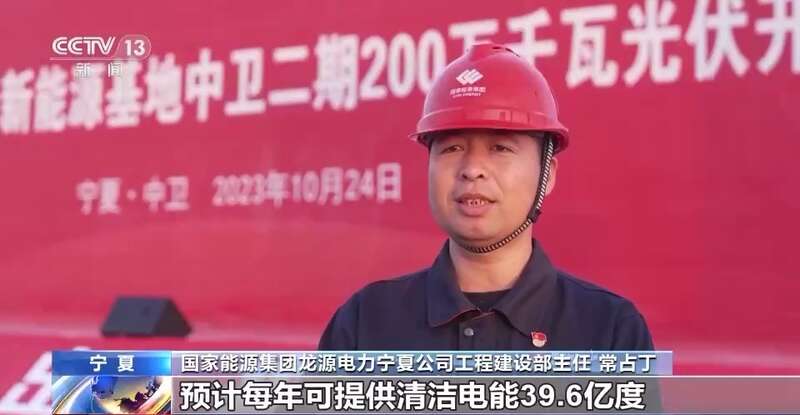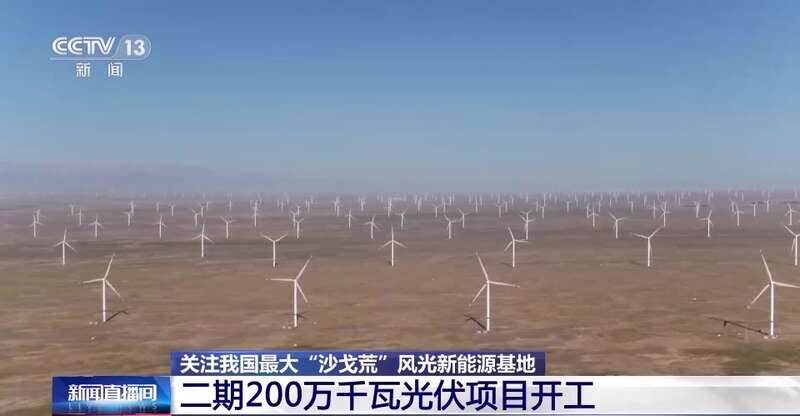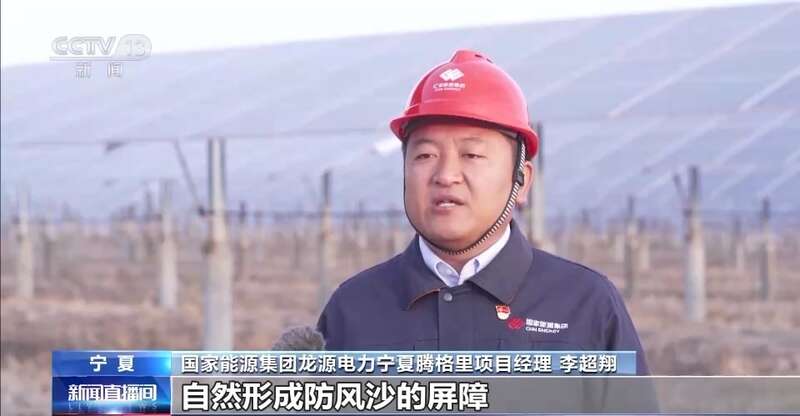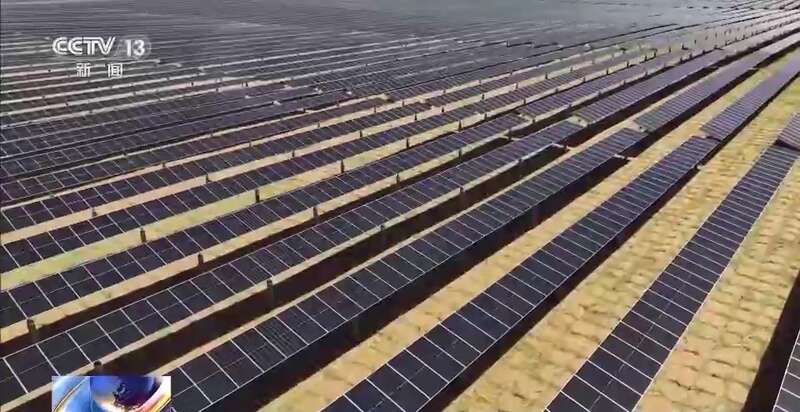Digital New Energy DataBM. Com learned that on October 24, the second phase of the 2 million kilowatt photovoltaic project of China's largest "Shago Wilderness" Scenery New Energy Base started in the Tengger Desert of Ningxia. Located on the southeastern edge of the Tengger Desert, the project has a construction scale of 2 million kilowatts and covers an area of about 60000 mu. It is estimated that 3.96 billion degrees of clean electricity will be provided annually and 1.207 million tons of standard coal will be saved.

The second phase of the project is located in the southeastern edge of the Tengger Desert, a typical aeolian sandy land, with a construction scale of 2 million kilowatts, covering an area of about 60000 mu, equivalent to the size of 5600 football fields, supporting the construction of two booster stations and one energy storage power station. Ningxia Tengger Desert Scenery Base mainly focuses on the construction of large-scale wind power and photovoltaic power, with a total installed capacity of 17 million kilowatts, which is the first base project to be put on record, started and put into operation in the national 10 million kilowatt "Shage Wilderness" base. Chang Zhanding, Director of Engineering Construction Department of
State Energy Group Longyuan Power Ningxia Company, said that after the second phase of the project is completed and connected to the grid, it is estimated that 3.96 billion degrees of clean electricity will be provided annually, saving 1.207 million tons of standard coal, which can meet the annual electricity consumption of 3.3 million households.

"Shage wasteland" is the abbreviation of desert, Gobi and desert areas. Since the 14th Five-Year Plan, the state has repeatedly proposed to accelerate the construction of large-scale wind power and photovoltaic bases in desert, Gobi and desert areas. Data show that China's desertified land area is 2.61 million square kilometers, accounting for 27% of the total land area. Border desert, Gobi wasteland, this barren land is also the most abundant area of solar energy and wind energy resources in China. With the construction of wind power and photovoltaic base, it has become a new blessed land in the field of energy.
In recent years, more and more photovoltaic manufacturing enterprises have chosen to invest and construct in Northwest China. From upstream to midstream and downstream manufacturing enterprises, raw material suppliers have settled down one after another. The photovoltaic manufacturing industry is expanding from concentrating on one or two links to the collaborative layout of the whole industry chain. In the Tengger Desert Scenery Base in Ningxia, the project has successfully explored a new path of "new energy construction + protection and restoration of Shagohuang ecosystem", and realized a new format of photovoltaic "power generation on board, planting between boards and restoration under boards".
At the site of the first phase project of Tengger Desert Scenery Base in Ningxia, more than 2.2 million photovoltaic panels are shining in the sunshine, and more than 17 million square meters of grass squares are continuous. "Gobi becomes a vast sea, and the desert takes on a new look" is the true portrayal of the project. Li Chaoxiang, project manager of

State Energy Group Longyuan Power in Tengger, Ningxia, said: We naturally form a barrier against wind and sand through the construction of photovoltaic arrays, and use grass squares on the surface to achieve sand prevention, sand fixation and sand control. Of the 28000 mu area covered by the first phase of the photovoltaic project, the scope of sand control has exceeded 26000 mu.

Reporters noted that compared with photovoltaic panels in most scenarios, the pile height of the photovoltaic project is obviously higher. Staff told reporters that the project will raise the center point of photovoltaic modules to 3 meters from the ground, leaving enough space for ecological sand control and inter-plate planting. At present, it has explored the planting of succulent plants, eggplants, peppers and other crops. The next step will be to carry out experiments on the planting of traditional Chinese medicines and pastures, and strive to build the first demonstration benchmark of the "Shage Wilderness" energy base.




















































 浙公网安备33010802003254号
浙公网安备33010802003254号